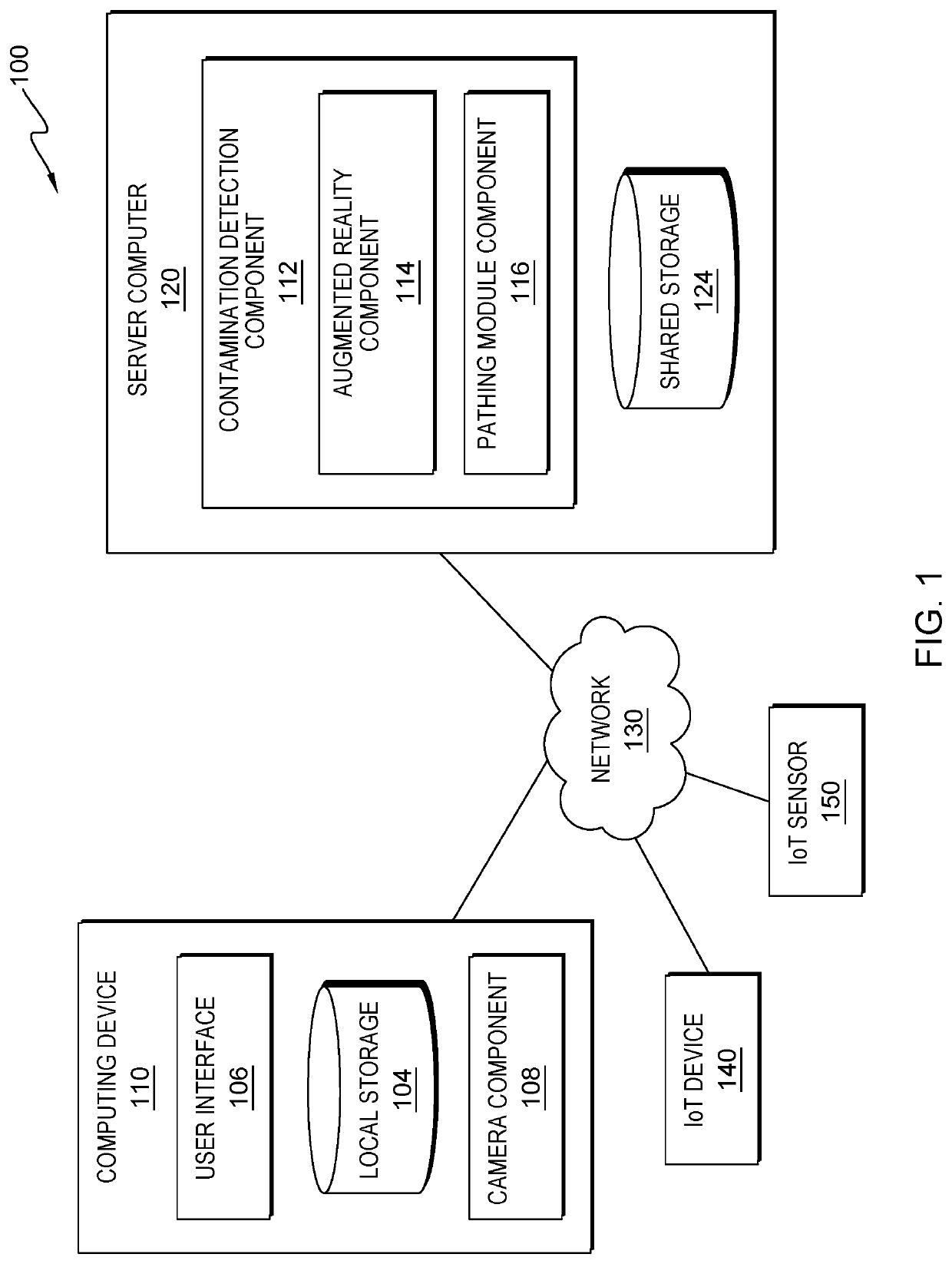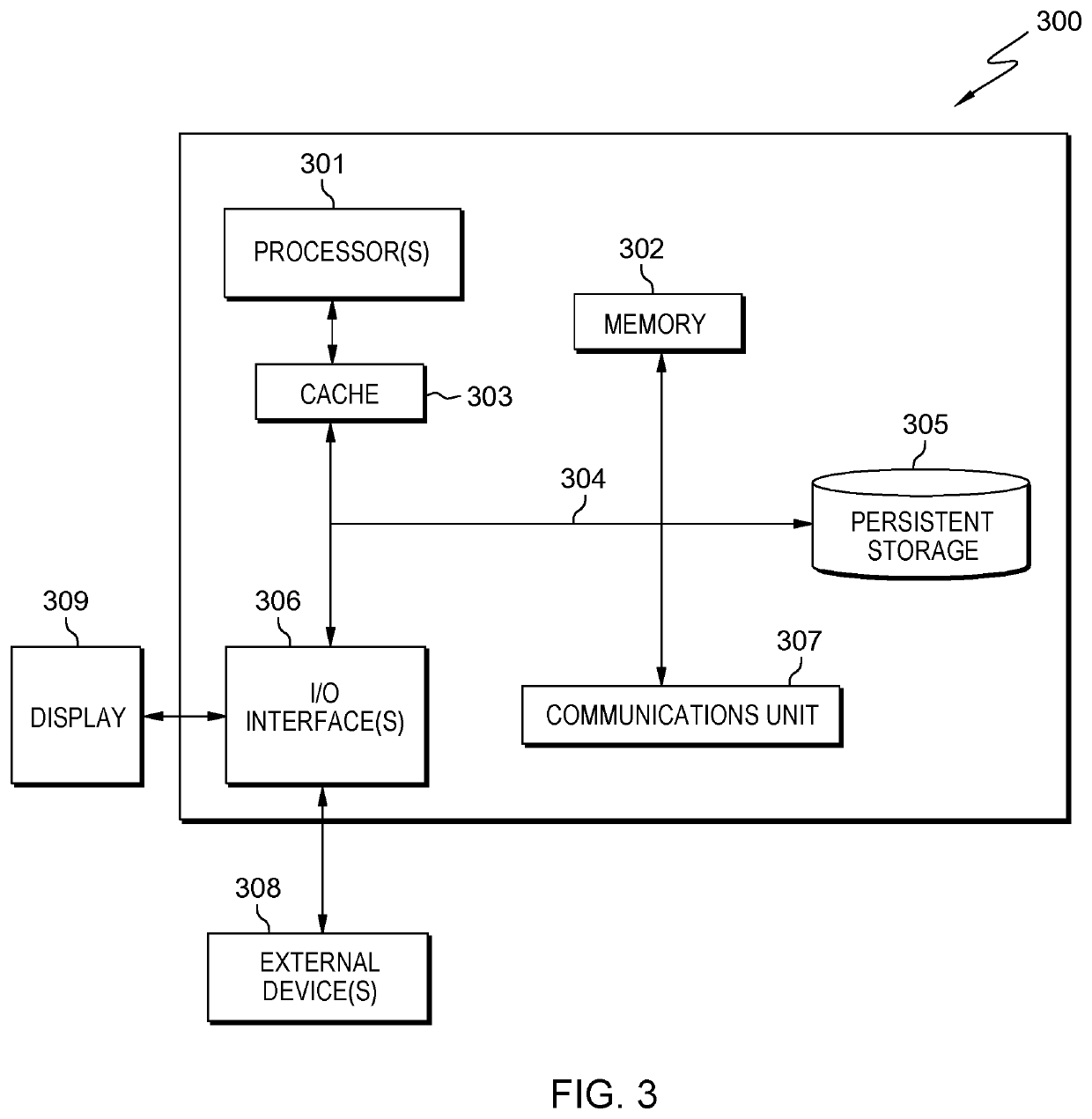Identifying and containing contaminants using IoT devices
- Summary
- Abstract
- Description
- Claims
- Application Information
AI Technical Summary
Benefits of technology
Problems solved by technology
Method used
Image
Examples
Embodiment Construction
[0008]Contamination can spread through wind flow, touch, flowing water, shared physical objects like a computer, work equipment, or shoes. The type of contamination is important to understand how the contamination can spread (e.g., some contaminants propagate through the air and some propagate through touch). For example, if a first user touches a contaminated area and then touches a non-contaminated area, then the later touched area will also be contaminated. Continuing this example, if a second user touches the same contaminated area then the contamination will propagate to any other surface the first user and second user touch. A contaminated area can be any large surface area or object known in the art (e.g., a room, hallway, large machine, or building) or a small surface area or object known in the art (e.g., a corner of the room, a spot on a counter, a doorknob, or a button). While a user is in a designated area the user can touch various objects and spread a contamination if ...
PUM
 Login to view more
Login to view more Abstract
Description
Claims
Application Information
 Login to view more
Login to view more - R&D Engineer
- R&D Manager
- IP Professional
- Industry Leading Data Capabilities
- Powerful AI technology
- Patent DNA Extraction
Browse by: Latest US Patents, China's latest patents, Technical Efficacy Thesaurus, Application Domain, Technology Topic.
© 2024 PatSnap. All rights reserved.Legal|Privacy policy|Modern Slavery Act Transparency Statement|Sitemap



